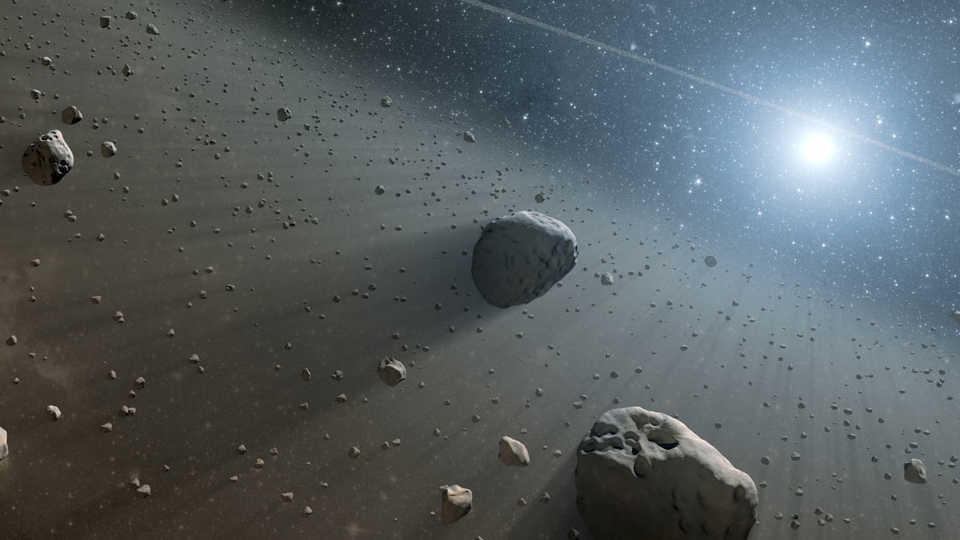In this activity students will:
- review and categorize the diversity of objects in the Solar System.
- explore how scientists use common characteristics to classify objects.

© NASA
The objects in our solar system are not limited to planets; rather, they range in size from microscopic dust all the way up to the Sun. In this sorting activity, students will practice sorting the objects in the solar system by characteristics used by scientists.
In this activity students will:
Print the Solar System cards in color, one-sided, on card stock or thick paper. (Printing each complete set on different color stock will make it easier to collect the cards later). Cut each page into 3 strips so that the image and corresponding description stay together. Fold each strip in half to make two-sided cards. Paste closed or tape around the edges, or laminate to make permanent cards.
This activity works well as a small group activity, so create enough sets of Solar System cards to allow one set for each group of students.
Ask the class to list the kinds of things that are found in the Solar System. Explore their ideas on what makes each different from the others, how many of each there are, and if there is more than one star in the Solar System. Include discussions of why the Sun appears so much brighter than other stars, how the Sun’s mass compares to the other objects in the Solar System, and how the Sun’s gravity affects those objects.
Show the students one of the cards and explain that they have images of various Solar System objects on one side, and information about the object on the back.
Give each student a card and ask them to sort themselves by size, distance from the Sun, common materials, alphabetically, or shape. There may be more than one way to sort. All reasonable attempts should be accepted.
Ask each group to sort their objects based on a given characteristic such as size. The first group to sort them correctly wins. Allow each group to finish and hold their hand up when they're done. Once they raise their hand, they can't change their order. If the first group has anything out of order, go to the second, and so forth.
Pick an object and have students take turns asking yes/no questions until they guess the object. The person who guesses correctly gets to pick the next object. Give time during games and between rounds for students to look at the backs of the cards.
The objects that make up our Solar System range in size from microscopic specks of dust all the way up to the massive star at its center. Yet it is common for us to think of the Solar System as consisting of the Sun and the planets – a misconception reinforced by the typical depiction of the Solar System as planetary orbits circling the Sun. Other common misconceptions are that there is more than one star in the Solar System, or that objects in the Solar System fall into specific, predetermined categories, distinct from each other. This activity allows students to explore the variety of objects found in the Solar System, and to create their own logical categories for them based on observation of the object’s characteristics.
This activity was adapted from a classroom activity originally developed by Anna Hurst Schmitt for the Teacher's Newsletter Universe in the Classroom. It may be found here.
Grade Three
Earth Sciences
4d. Students know that Earth is one of several planets that orbit the Sun and that the Moon orbits Earth.
Grade Five
Earth Sciences
5a. Students know the Sun, an average star, is the central and largest body in the solar system and is composed primarily of hydrogen and helium.
5b. Students know the solar system includes the planet Earth, the Moon, the Sun, eight other planets and their satellites, and smaller objects, such as asteroids and comets.
Fifth Grade
5-ESS1-1: Support an argument that differences in the apparent brightness of the sun compared to other stars is due to their relative distances from Earth.